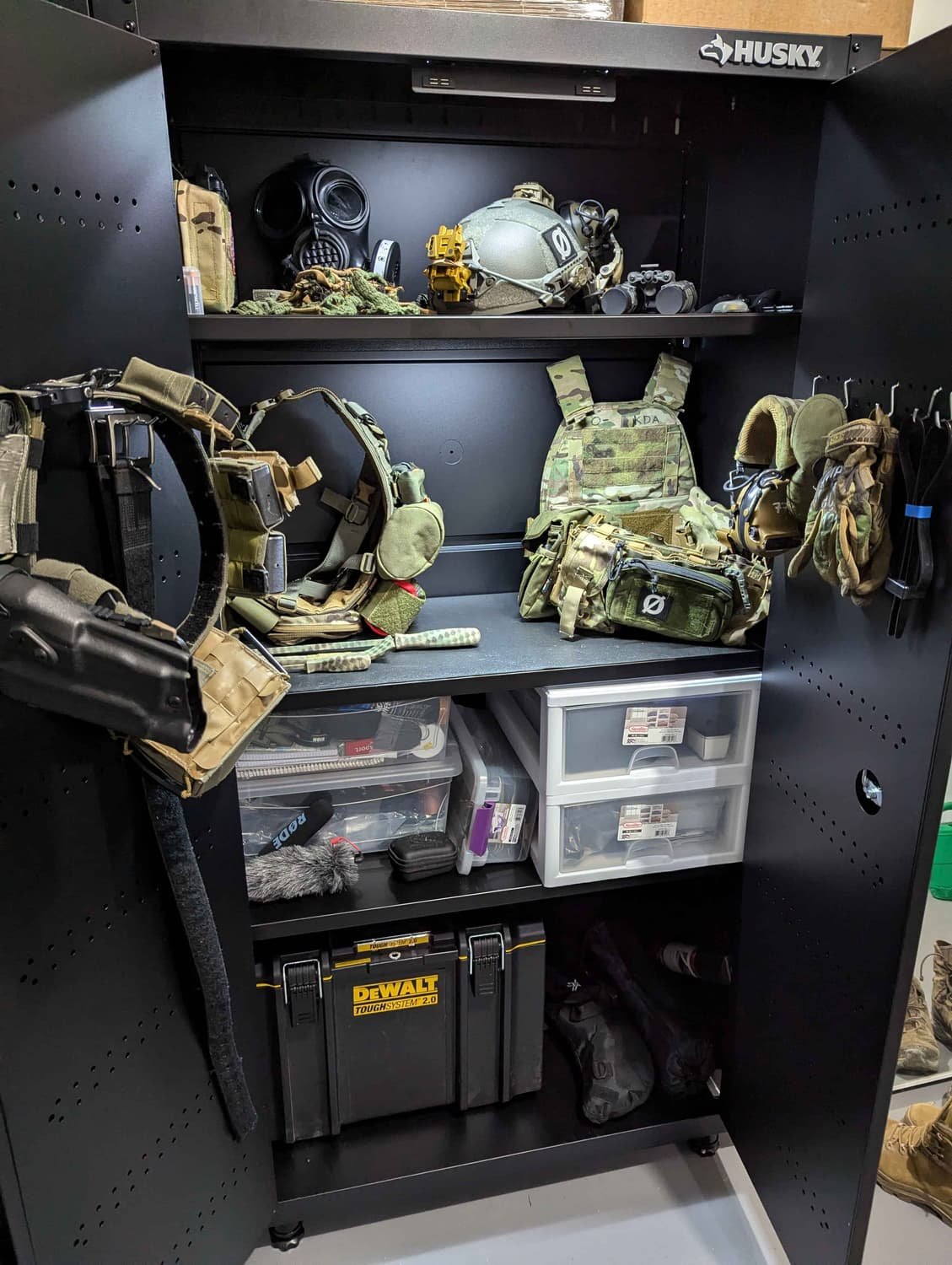8 Ways to Prepare for Your First Tactical Shooting Course
An OFFSPECWAR Guide for New Gunfighters
Stepping onto a tactical range for the first time can feel equal parts exciting and intimidating. Unlike a casual day of plinking, a tactical course stresses real-world application—movement, problem-solving, and medical readiness—all under the watchful eyes of experienced instructors. Proper preparation doesn’t just help you shoot better; it keeps you and everyone else safer. This guide walks you through everything you need to do before attending an OFFSPECWAR program such as Gunfighter Essentials courses like Handgun Essentials & Carbine Essentials, and our Nightfighter series as well.
1. Understand Your Course and Its Objectives
Before booking, read the course page carefully:
Scope – Is it a fundamentals course (Gunfighter Essentials) or an advanced dynamic program? Most Intermediate & Advanced courses require prior training experience to fulfill prerequisites.
Primary skills – Expect holster work and reloads in Handgun Essentials; low-light equipment familiarity in Nightfighter Intro; and team movement drills in Lightfighter Essentials.
Outcome – OFFSPECWAR courses typically finish with a qualification shoot and a Stop the Bleed® certification.
Round count & duration – Plan ammo and stamina accordingly (e.g., ~600 rounds over two days for Handgun Essentials).
If the description leaves you with questions, email the training team—clarity now prevents surprises on the firing line.
2. Physical & Mental Preparation
Functional Fitness
You don’t need to be a marathoner, but you will kneel, lay prone, run, and shoot from unconventional positions. In the weeks leading up to the course, emphasize basic mobility:
Quads & Hamstring stretching to unlock your knees and lower back
Lunges & Squats to prepare for moving in and out of positions
Neck & Upper body stretching to relax your shoulders into a neutral posture
Child's pose, Cobra pose & cat/cow stretches will help tie all your efforts together
Mindset
Come with an empty cup. Tactical instruction challenges habits you may have built on static ranges. Be ready to:
Accept constructive feedback and ask probing questions for us to help with
Prioritize safety & following the instructed drills over ego
Work calmly under a shot timer or scenario stress, and drive your body with a sense of urgency
3. Gear Checklist
Below is a highly condensed version of the downloadable Tactical Course Prep Checklist—grab the full PDF at the end of this article.
| Category | Essentials |
|---|---|
| Firearm | Clean, tested pistol/rifle; 3–5 mags; quality holster or sling; mag pouches, Ammo (+20% extra) |
| Gear | Sturdy gun belt for holster, mags & IFAK; chest rig or plate carrier for armour & additional fighting load |
| PPE | Eye & electronic ear pro, brimmed cap, sturdy footwear, weather-appropriate clothing |
| Medical Kit | CoTCCC-approved tourniquet, pressure bandage, gauze, gloves, marker (all available at OFFSPECWAR) |
| Admin | PAL & ATT, notebook, water (2L/Day minimum), snacks & meals |
Tip → Label magazines with a paint pen. Lost mags on a gravel bay look eerily similar.
4. Ammo
Round Count – Bring the published minimum plus at least ~20 % extra. Malfunctions or make-up drills can eat ammo fast.
Quality Factory Brass Ammo — Reloading is great for saving costs, but reliability is critical in order to focus on the course work rather than stoppages and problems all day long. Aluminum and steel cased ammo often bring nothing but problems.
Packaging – Factory boxes work, but loose ammo in labeled containers speeds up reloads.
5. Brush Up on the Fundamentals
Even an “intro” tactical course assumes safe gun-handling basics. Spend a few evenings at home or on a sterile range practicing:
Loading and unloading your firearm—keeping your finger off the trigger.
Clearing your chamber—making it “safe” with “PROVE”.
Controlling and adjusting your optic—how to turn it off/on, and adjust the zero.
Disassembling and cleaning—your gun may need maintenance on course, and its best to start with a clean firearm.
Malfunction clearance—tap-rack or rip-work-tap-rack.
Checkout this Firearms Safety Refresher from Silvercore to brush up on your ACTS & PROVE.
For carbine students, confirm your rifle is zeroed at a known distance; wasted time zeroing steals reps from skill blocks.
6. What Not to Do
Don’t test new gear on Day 1. Run it beforehand if you can, and be open to change it if you can’t.
Don’t ignore fatigue. Hydrate, snack, and stretch.
Don’t coach other students. Let instructors manage safety and technique.
Don’t assume competition experience equals tactical proficiency. The objectives differ; keep an open mind.
7. Final Tips for Success
Read the Joining Instructions — Highly detailed document sent prior to the course, with info on every needed to prepare.
Logistics – Confirm range directions and parking. Plan to arrive 30 minutes early for gear staging and safety brief.
Organize > Optimize. A tidy range bag, simple gun belt, and basic chest rig beats a Gucci mess.
Document learning. Jot quick notes during water breaks; you’ll forget key takeaways otherwise.
Ask early. Instructors welcome questions—and it’s best to ask before wasting ammo downrange if you’re unsure.
Recover smartly. Post-day stretching and hydration cut next-morning soreness.
8. Ready to Hit the Range?
Browse upcoming dates for Gunfighter, Nightfighter, and Lightfighter courses on our Training Calendar. Seats are capped for maximum instructor contact, and many classes sell out weeks in advance.
“The small class size and medical focus set OFFSPECWAR apart. I walked away confident, safe, and hungry for the next level.” — Mike S., Abbotsford
Download Your Free Tactical Course Prep Checklist
Click the button below to grab a printable PDF of the full checklist—perfect for your gear bag.
Preparation transforms a good course into a game-changing experience. By dialing in your fitness, mindset, gear, and basics ahead of time, you’ll arrive on the line ready to absorb every rep—and leave as a safer, more capable shooter. Train hard, stay sharp, and we’ll see you at the next OFFSPECWAR course.

